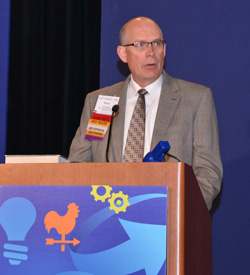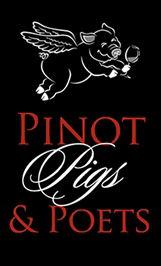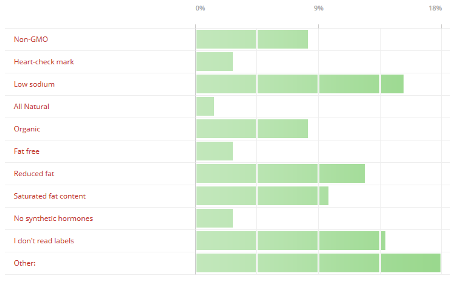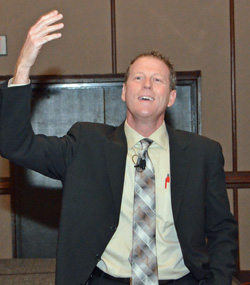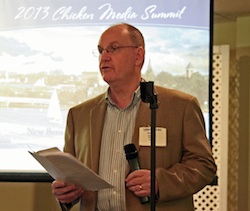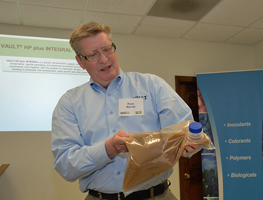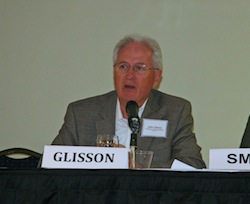 Society today wouldn’t be where it is if it wasn’t for modern medicine. The same thing applies for poultry production. The modernization of the poultry industry keeps the birds safe and ensures a safe food supply.
Society today wouldn’t be where it is if it wasn’t for modern medicine. The same thing applies for poultry production. The modernization of the poultry industry keeps the birds safe and ensures a safe food supply.
I talked with Dr. John Glisson, Director of Research Programs for US Poultry & Egg Association after he served on one of the panels discussing chicken issues in the news during the recent Chicken Media Summit. As a veterinarian, he discussed issues poultry companies face each day to ensure a nutritious, wholesome and safe product. Bio security and the use of antibiotics were a few of the hot topics brought up.
“Something that’s currently in the news right now is Avian Influenza in China and it’s potential to infect people. We use bio security to keep that virus out of our system. Most of the time that virus is spread by wild birds or by people. We don’t allow any wild birds or people onto the farms. So, here in the United States we have managed to radicate that type of virus from the whole system. We also have a program constantly monitoring every single broiler flock that goes to market in the United States and testing it to make sure it is free from Avian Influenza. So, not only have we removed the virus, we have a very intensive early warning system if it ever comes in.”
“The perspective is that we are raising 8 billion chickens a year in the United States. Some of them get sick. We try everything possible not to allow them to get sick and we have incredible disease prevention programs. Because the last thing we ever want to happen is for a flock to get sick. But occasionally it happens. What are we going to do then? Let me die? No, we can’t. We have to treat them, but when we use the antibiotics we use it very responsibly. Each antibiotic has a FDA required withdrawal period. It may say on there “can’t be used in birds within 10 days of slaughter.” And what that has established to do is make sure if we use antibiotics on birds and withdrawal the antibiotic the correct length of time, there will be none in the meat. And so, we use them sparingly and very safely.”
Listen to my interview with John here: John Glisson
Check out photos from the event here: 2013 Chicken Media Summit Photo Album

